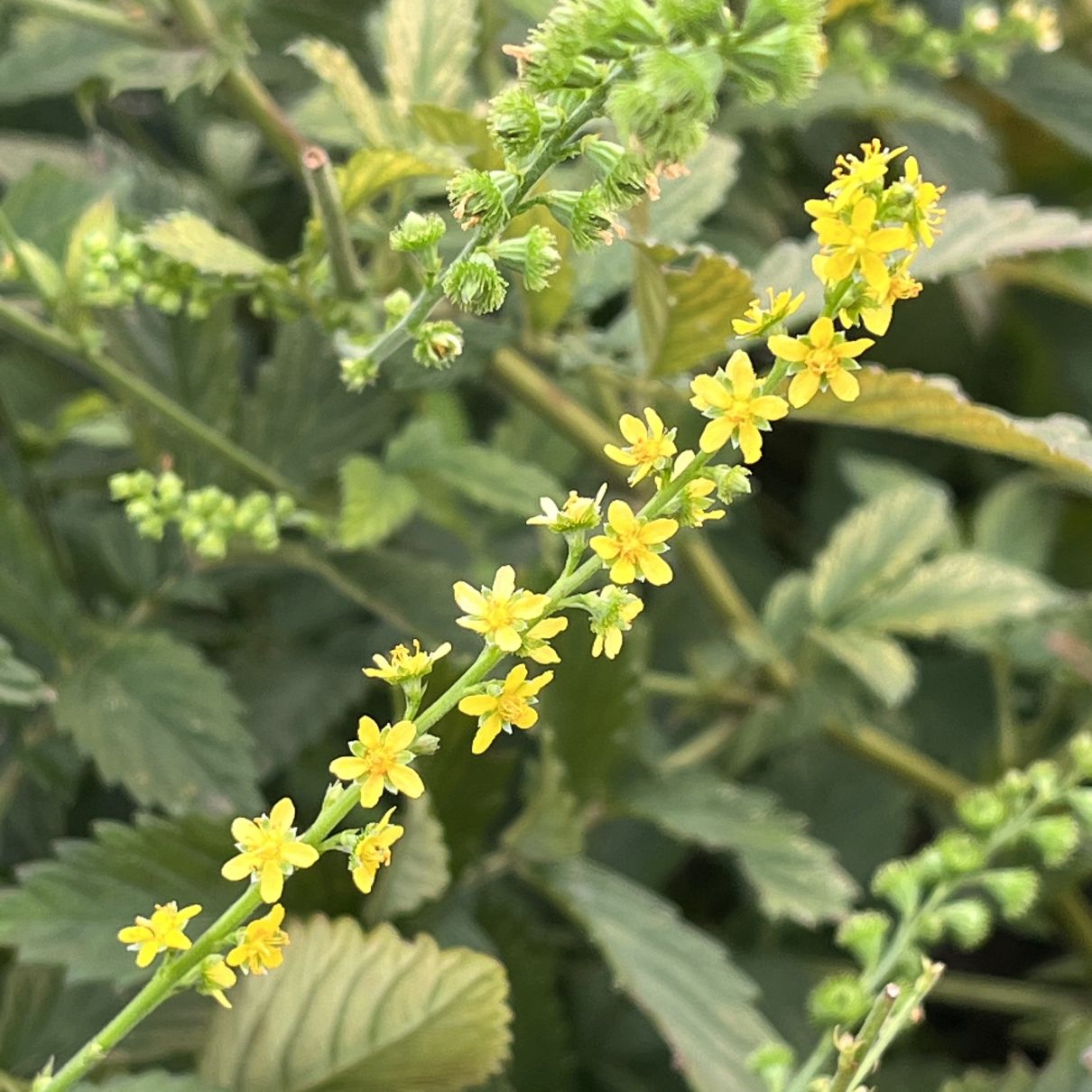キンミズヒキは黄金色の花穂が慶事を思わせる一方、痩果が「ひっつき虫」に。昔から子どもたちが投げ合い、衣類に付着させて遊びました。
Hairy Agrimony’s golden-colored flower spikes evoke celebrations. Its achene, a burr, has long been a favorite pastime for children, as it has been tossed between friends and stuck to clothing.
【仮名】キンミズヒキ
【和名】金水引
【英名】Hairy Agrimony
【学名】Agrimonia pilosa var. japonica
【誕生】08/ 21
【開花】07, 08, 09, 10月
【花色】Yellow
キンミズヒキ
キンミズヒキの概要
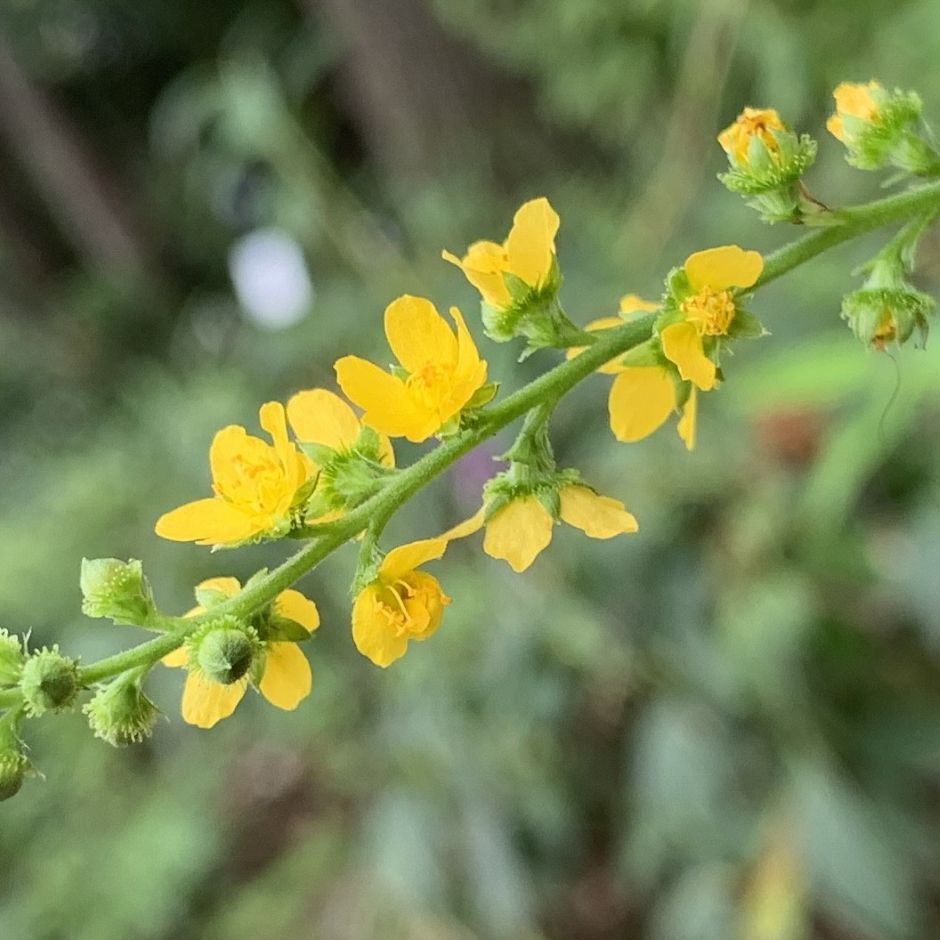
キンミズヒキはバラ科の多年草。日本では北海道、本州、四国、九州、沖縄、国外ではロシア極東、朝鮮半島、中国、台湾、ベトナム北部に分布しています。黄金色の花穂が慶事を思わせる一方、痩果が「ひっつき虫」に。昔から子どもたちが投げ合い、衣類に付着させて遊びました。
キンミズヒキの名前
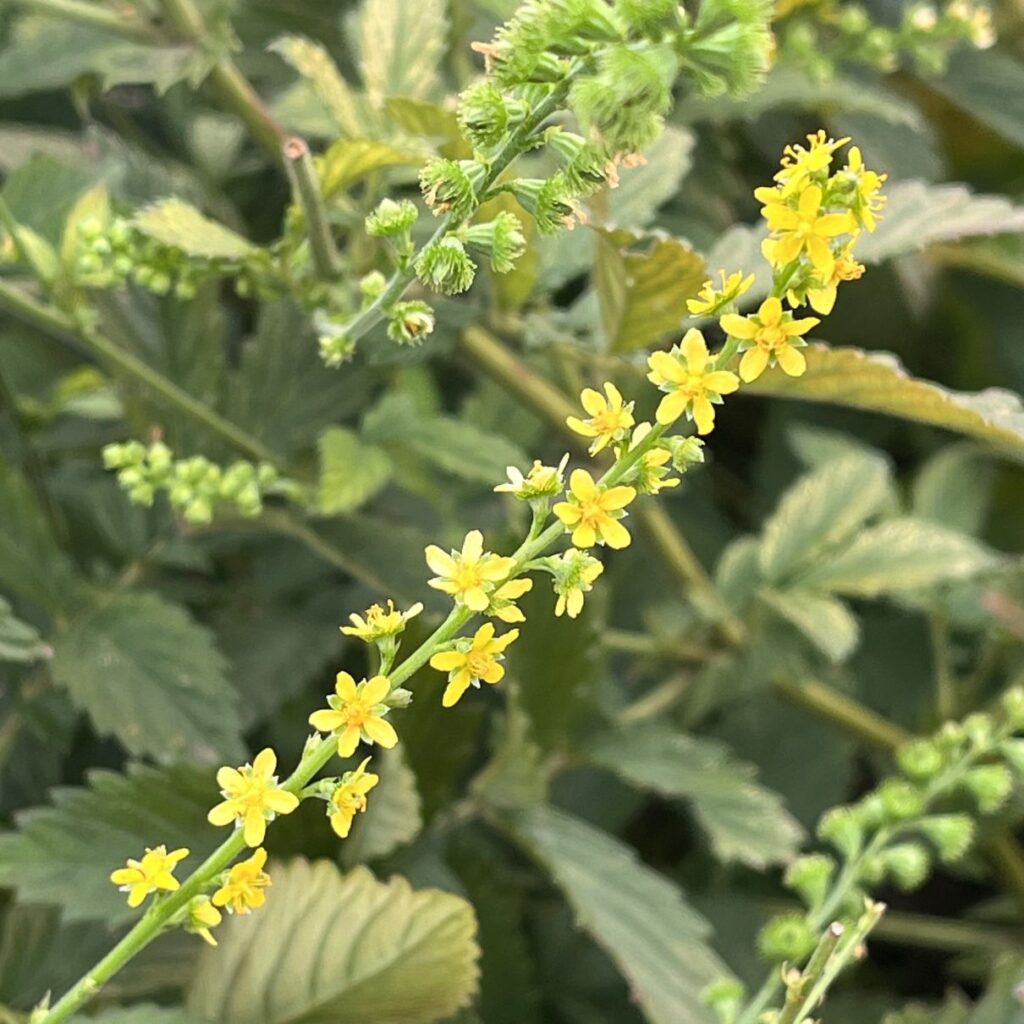
キンミズヒキの名前の由来は、黄色の花を「金」に、細長い花穂を祝儀袋の飾り紐「水引」に見立てたから。ラテン語の属名アグリモニアは外観から「軟毛のある」、または昔の薬用から「眼病を治す」、種小名ピローサは「毛深い」、変種名ジャポニカは「日本の」という意味です。
キンミズヒキの姿形
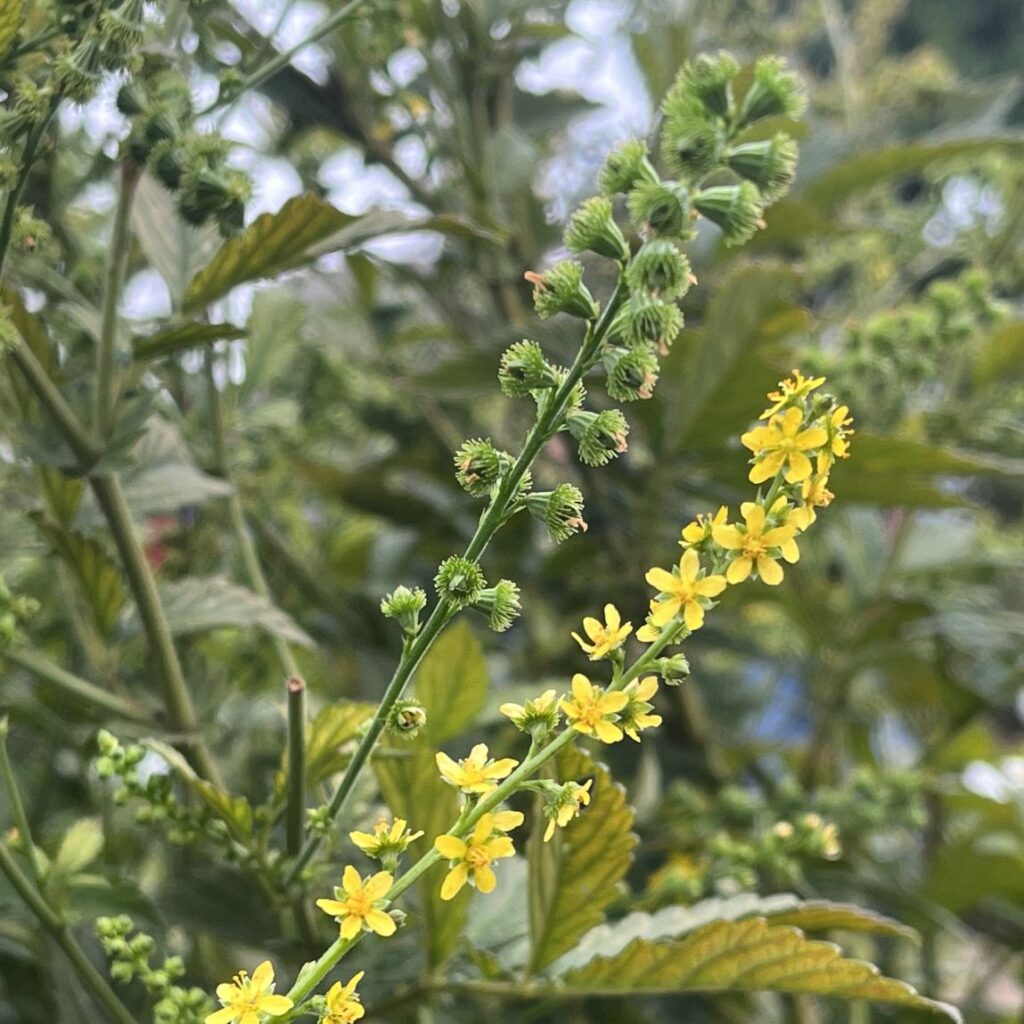
キンミズヒキの根は褐色。茎は粗毛が生えます。葉は互生の奇数羽状複葉。小葉は倒卵形で先端が尖り、縁に粗い鋸歯があります。花は穂状で、下から順に咲き上がり、花弁が5枚、雄しべが10~15本、雌しべが2裂。痩果は鉤状の刺が生え、動物の被毛に付着して遠くに運ばれます。
キンミズヒキの利用
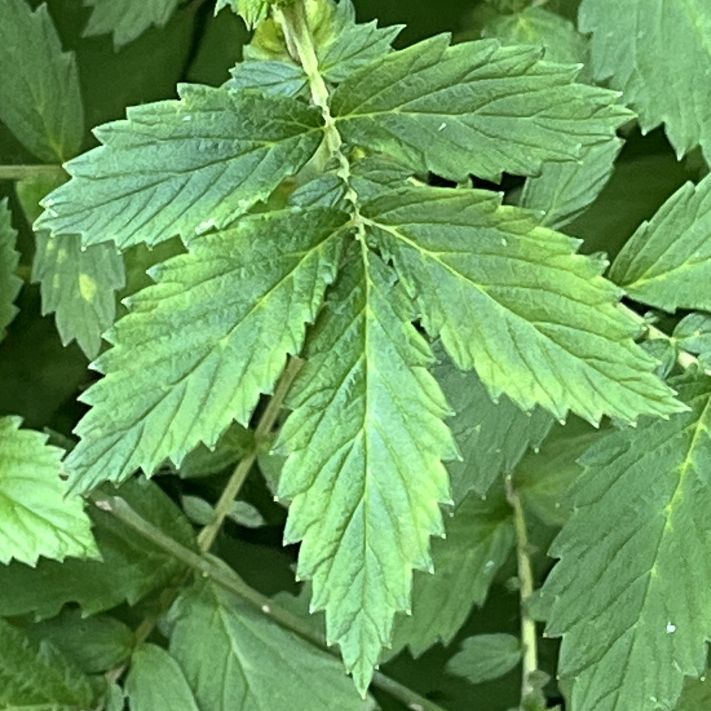
キンミズヒキは止血、収斂、抗菌・抗炎症作用があるタンニン、アグリモニン、フラボノイドを含みます。昔から生薬「仙鶴草」として全草を乾燥し、煎じて外傷、内出血に外用、下痢、消化不良に服用。一方、春の若葉は灰汁抜きし、天ぷら、お浸し、和えものなどで食べられます。
Hairy Agrimony
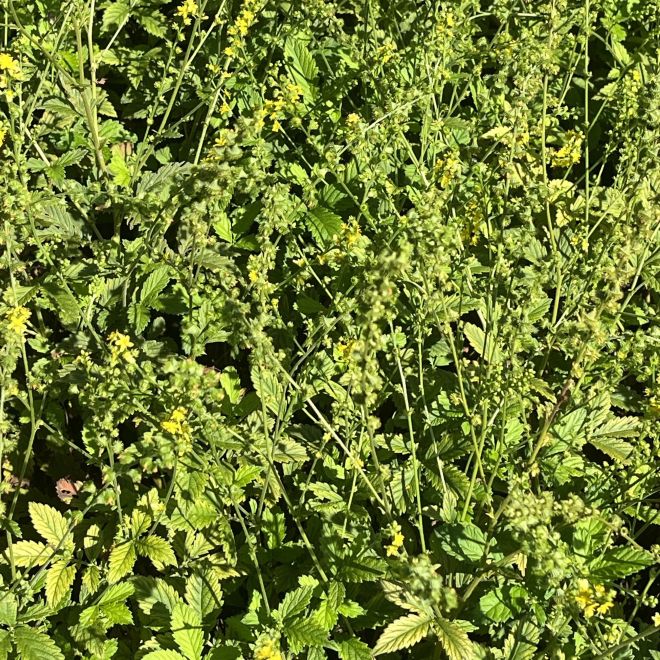
Hairy Agrimony is a perennial plant in the Rosaceae family. It is found in Hokkaido, Honshu, Shikoku, Kyushu, and Okinawa in Japan, and in the Russian Far East, the Korean Peninsula, China, Taiwan, and northern Vietnam. Its golden-colored flower spikes evoke celebrations. Its achene, a burr, has long been a favorite pastime for children, as it has been tossed between friends and stuck to clothing.
The Japanese name for Hairy Agrimony means “golden decorative cord.” This comes from the resemblance of its long, slender yellow flower spikes to the decorative cords found on gift envelopes. The Latin genus name, Agrimonia, means “softly haired” based on its appearance, or “cures eye diseases” based on its ancient medicinal use. The specific name, pilosa, means “hairy,” and the variety name, japonica, means “Japanese.”
Hairy Agrimony roots are brown. Stems are covered with coarse hairs. Leaves are alternate, odd-pinnate, and compound. Leaflets are obovate, pointed at the tip, and have coarsely toothed edges. Flowers are spike-shaped, blooming from the bottom up, with five petals, 10-15 stamens, and a two-lobed pistil. The achenes have hooked spines and are carried far away by attaching to animal fur.
Hairy Agrimony contains tannins, agrimonin, and flavonoids, which have hemostatic, astringent, antibacterial, and anti-inflammatory properties. The whole plant has long been used as a medicinal herb, dried and brewed into a decoction for external use on wounds and internal bleeding, and orally for diarrhea and indigestion. Young spring leaves, meanwhile, can be soaked in water and eaten as tempura, blanched, or mixed with other dishes.

